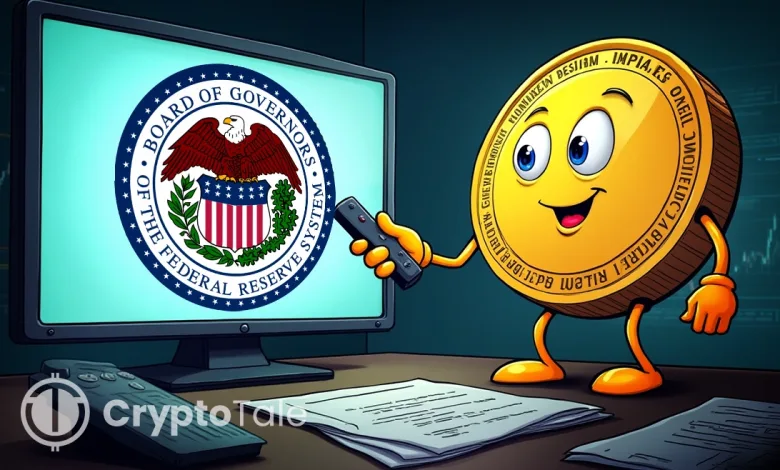Fed Removes Reputational Risk, A Positive Signal for Crypto?

- The Fed drops reputational risk from exams, easing oversight on crypto-involved banks.
- Supervisors must now focus on measurable financial risks across all Fed-regulated banks.
- Regulators will retrain examiners and revise manuals to align with the new policy.
The Federal Reserve has taken a new step that could ease pressure on banks involved in digital asset transactions. On Monday, the Fed announced it will no longer use “reputational risk” as a factor in bank supervision. Instead, the central bank will focus only on measurable financial risks.
This move follows years of criticism from cryptocurrency firms and politicians. They claimed that the Fed used reputational concerns to indirectly restrict crypto access to banking services. Now, banks may feel more confident offering services to digital asset businesses.
Exam Manual Revisions Underway
The Fed stated that it has begun removing references to reputation from its examination materials. In its place, the Fed will add specific language focused on financial risks. Officials also plan to train examiners to ensure consistent practices across all Fed-supervised banks.
Chair Jerome Powell had earlier pledged to make this change. In February, he stated that bank supervisors should not judge “controversial commentary or activities” unless they have a direct impact on financial stability. This week’s announcement confirms the central bank is following through on that pledge.
Although the change removes reputation from the official exam criteria, banks still need strong risk management systems. The Fed stressed that all institutions must comply with existing laws and regulations. Banks can still consider reputational risk in their own internal frameworks if they choose to.
Crypto Advocates Applaud
Senator Cynthia Lummis, a strong crypto supporter, welcomed the update. She said earlier policies had “assassinated American Bitcoin and digital asset businesses.”
The American Bankers Association also supported the change. Its president, Rob Nichols, said the shift will make supervision “more transparent and consistent.”
Nichols added that banks should make decisions based on sound risk policies, not regulators’ opinions. He noted that regulators should not discourage lawful business just because it is controversial.
For years, crypto firms complained of being shut out of banking. Many blamed Operation Chokepoint 2.0, a term used to describe unofficial pressure on banks to drop risky clients. With the Fed’s change, that kind of scrutiny may now lessen.
Other U.S. regulators are also easing restrictions on digital assets. In May, the Office of the Comptroller of the Currency said banks could trade crypto for clients. In March, the FDIC said prior approval is no longer needed for crypto activities.
Related: Federal Reserve Withdraws Crypto-Guidance on U.S. Banks
Critics Raise Concerns
Some consumer groups are worried. They argue that removing reputational oversight could lead to fewer checks on bad actors. Without reputational risk reviews, banks might work with politically sensitive or ethically questionable clients.
These critics assert that the step would compromise oversight as a whole. They worry that this is likely to open up even further risky behaviour in the banking sphere. Nevertheless, the Fed claimed it will still keep an eye on banks regarding financial stability and compliance. The agency will not ignore problems that threaten public trust or market confidence.
Notably, this move could open new doors for the adoption of cryptocurrency in the banking system. With less fear of reputational backlash, banks may start offering more digital asset services. This could help connect traditional finance with the growing blockchain economy.
The change also sets the tone for broader reforms. As crypto adoption grows, regulators may now focus on tangible financial risks. This shift could bring more clarity and fairness to how banks serve the digital asset space.
For now, the Fed’s new guidance is being rolled out across its institutions. Examiners will be retrained. Manuals will be updated. Other federal regulators may follow the Fed’s lead.
This could mark a turning point in the relationship between U.S. banking and digital assets. By removing vague standards, the Fed may give banks more confidence to innovate. That, in turn, could strengthen the nation’s position in the global crypto race.




